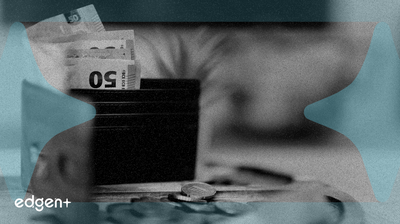 Report
Report
No Data Yet
Related News

Bittrex Bankruptcy Filings Reveal Over $500M in Suspicious Transactions
## Executive Summary Bankruptcy filings from crypto exchange **Bittrex** have uncovered over $500 million in suspicious transactions, raising significant concerns for nearly 2 million users awaiting fund recovery and potentially escalating regulatory scrutiny across the digital asset sector. ## The Event in Detail Bankruptcy court documents from **Bittrex** and its affiliated entities have revealed an extensive array of problematic financial activities. These include tens of thousands of contradictory, suspicious, and economically unreasonable transactions within the exchange's operational history. Among the findings are numerous small, economically impractical transactions and over 10,000 duplicate transactions, where the same specific amount of cryptocurrency was allegedly withdrawn on the same day. Furthermore, hundreds of transactions were recorded after the respective blockchain networks were reported to be shut down. These irregularities have directly complicated fund recovery efforts for **Bittrex**'s approximately 2 million users. In addition to these internal operational issues, **Bittrex** faces significant financial liabilities to United States regulators. The exchange owes $24 million, with $5.3 million due to the Office of Foreign Assets Control (**OFAC**) and $18.7 million to the Financial Crimes Enforcement Network (**FinCEN**). These debts originate from settlements in 2022 regarding violations of anti-money laundering (**AML**) regulations and sanctions programs, making **OFAC** **Bittrex**'s largest creditor. ## Market Implications The revelations from the **Bittrex** bankruptcy proceedings are poised to further erode confidence in centralized cryptocurrency exchanges and intensify calls for stricter regulatory oversight. This incident follows a period of heightened security challenges within the broader **Web3** ecosystem. The first quarter of 2025 alone saw over $2 billion lost due to security incidents, representing a 96% increase compared to Q1 2024. This includes a major exploit on **Balancer**, a multi-chain automated market maker, resulting in an estimated $128 million in losses across various chains, and significant hits to **CeFi** platforms like **Bybit** ($1.46 billion) and **Phemex** ($85 million) due to access control failures. The persistent pattern of operational failures and security compromises, particularly access control exploits accounting for over $1.6 billion in losses in Q1 2025, underscores systemic vulnerabilities. Such events place immense pressure on regulatory bodies to implement more robust frameworks, potentially leading to increased compliance burdens for all digital asset firms. ## Expert Commentary Industry experts are warning of potential contagion effects. David Bailey, chairman of **Bitcoin Magazine** and an advisor on cryptocurrency policy, has cautioned that the **DeFi** lending sector is exhibiting early signs of a significant credit crisis. Bailey suggests this could overshadow the market crash experienced in October. He explains that market makers could face severe challenges if lending protocols freeze collateral or if margin calls are not cleared effectively, leading to liquidity issues and potential bad debt for exchanges. This warning draws parallels to the 2022 lending crisis, which followed the **Terra Luna** collapse and resulted in the downfall of prominent crypto lenders and hedge funds. ## Broader Context The **Bittrex** situation is a stark reminder of the ongoing challenges within the digital asset landscape concerning security, compliance, and investor protection. In the first half of 2025, investors reportedly lost $3.1 billion to scams and hacks, with projections indicating over $4.3 billion by year-end. While some recovery firms report high success rates (e.g., **CRC** at 98%, **BCA** at 94%, **XHR** at 97%), the average recovery across the sector is around 70%, and in certain high-profile hacks, only a minimal percentage of stolen funds have been recuperated. These figures emphasize the critical need for enhanced security measures, transparent operations, and effective regulatory enforcement to safeguard participants in the rapidly evolving **Web3** economy.

Tornado Cash Sees 4,920 ETH Withdrawal and Sale Amid Market Uncertainty
## Executive Summary An unknown entity withdrew 4,920 **ETH** from the privacy mixer **Tornado Cash**, subsequently selling the tokens for approximately $16.25 million, triggering market uncertainty regarding the transaction's origin and implications. ## The Event in Detail A wallet designated as **三新钱包** executed a withdrawal of 4,920 **Ethereum (ETH)** from the decentralized privacy mixer **Tornado Cash**. This substantial amount of **ETH** was then liquidated at an average price of $3302, resulting in an approximate total of $16.25 million. The precise identity of the entity behind this transaction remains unconfirmed, prompting market speculation. Two primary theories have emerged: the withdrawal and sale could be attributed to a malicious actor or hacker, or it could be associated with addresses linked to **Richard Heart**, the founder of **Hex (HEX)** and **PulseChain**. Prior market activity shows **Richard Heart**-linked addresses previously acquired 132,000 **ETH** using 499 million **DAI** in March 2023, at an average purchase price of $3,770 per **ETH**. Additionally, on-chain analytics firm Lookonchain reported the movement of 112,978 **ETH**, valued at approximately $366 million, to **Tornado Cash** from addresses strongly associated with **Heart**. Further, Arkham Intelligence indicated that beneficiaries of **HEX** mixed over $500 million worth of **ETH** through **Tornado Cash**, with the **SEC** alleging in a July 2023 lawsuit that **Heart** transferred $26 million in **ETH** via a crypto mixer and 50 intermediary wallets. **Heart** himself acknowledged familiarity with digital asset mixers in a 2019 video. ## Market Implications The sale of 4,920 **ETH** introduces immediate selling pressure into the **Ethereum** market. Beyond the direct price impact, the transaction intensifies concerns surrounding the use of privacy mixers like **Tornado Cash** for potentially illicit activities. This event, regardless of the actor's identity, contributes to an environment of heightened scrutiny concerning security within the decentralized finance (DeFi) ecosystem and the transparency of large-scale cryptocurrency movements. Investor sentiment may be influenced by the ongoing uncertainty regarding the source of such significant withdrawals and their potential regulatory ramifications. ## Expert Commentary Analysts provide varied long-term outlooks for **Ethereum**. **Standard Chartered** analysts, including Geoff Kendrick, forecast **ETH** could reach $14,000 by the end of 2025. This projection is underpinned by expectations of spot **ETH** Exchange-Traded Fund (ETF) approvals and network upgrades aimed at enhancing scalability and reducing transaction costs. The firm also suggested **ETH** could potentially hit $35,000 if **Bitcoin** reaches $175,000, positing that **Ethereum's** market capitalization could eventually align with **Bitcoin's**. **Deltec Bank**, a Bahamian financial institution, offers an optimistic target of $10,000 for **ETH** by the end of 2025 and $22,500 by 2030, citing the transition to Proof-of-Stake, the **London hard fork**, and anticipated fiat currency inflation. More conservative estimates from **Deltec Bank** place **ETH** at $9,000 by 2025 and $20,750 by 2030. ## Broader Context **Tornado Cash** functions as a decentralized protocol designed to obscure the origins and destinations of cryptocurrency transactions, thereby enhancing user privacy. However, its privacy-enhancing features have also led to its use in high-profile illicit activities. For instance, a previous incident saw a hacker laundering 493.7 **ETH** through **Tornado Cash** following a hack. The ongoing regulatory focus on such mixers, particularly in light of their potential exploitation for money laundering and sanction evasion, underscores a broader industry challenge regarding maintaining privacy without facilitating illegal financial flows. The ability to trace transactions, while possible with forensic analysis for cryptocurrencies like **Bitcoin**, remains complex for mixer-facilitated movements.

Sprinter Secures $5.2 Million Seed Funding Led by Robot Ventures to Advance Cross-Chain Infrastructure
## Executive Summary Sprinter, a cross-chain infrastructure startup, has successfully completed a $5.2 million seed funding round. The investment was led by **Robot Ventures**, with a primary objective to advance the functionality of blockchain **solvers** and enhance cross-chain interoperability within the decentralized finance (DeFi) ecosystem. ## The Event in Detail The $5.2 million seed round for **Sprinter** saw significant participation beyond lead investor **Robot Ventures**. Other institutional contributors included **A Capital**, **Atka Capital**, **Bond St Ventures**, **Topology**, and **Uniswap Labs Ventures**. The funding round also attracted several angel investors, such as **Ameen Soleimani** of 0xbow, **Eva Beylin** of Optimism, and **Chen Zituo** of WAGMI Ventures. The Sprinter team includes prominent **Ethereum** core developers and **EIP** authors, including **ChainSafe Systems** CEO **Aidan Hyman** and former **ENS** developer **Dean Eigenmann**, underscoring the project's foundational expertise in **Ethereum**-based development. ## Financial Mechanics and Product Offerings Sprinter's strategy revolves around two core products: **Sprinter Stash** and **Sprinter Solve**. **Sprinter Stash** operates as a cross-chain credit protocol designed to provide liquidity access to **solvers** and market makers without requiring collateral. Liquidity providers deposit **USDC** into **Sprinter Stash**, earning yield from solver fees, passive yield, and protocol incentives. Approved solvers undergo screening and onboarding, using authenticated **API** keys and operating under rate limits and monitoring. **Sprinter Stash** dynamically allocates liquidity across supported chains based on demand, enabling solvers to request and borrow credit instantly on destination chains for seamless cross-chain execution. Once transactions are completed, funds are received on the source chain, credit is repaid, and profits are distributed to liquidity providers and solvers. The protocol also features **SPRINT**, a native governance token, intended to incentivize liquidity providers, solvers, and community participants, with staking offered via **veSPRNT**. **Sprinter Solve** offers dApps, wallets, and protocols with request-for-quote-based swap **APIs**, aiming to improve transaction execution performance by providing solvers and market makers with collateral-free credit. ## Business Strategy and Market Positioning Sprinter's business strategy is centered on improving the functionality of blockchain **solvers**, an emerging sector of off-chain bots, algorithms, and market makers that execute on-chain actions for users. These **solvers** address critical challenges within the blockchain landscape, such as fragmentation and a lack of composability across protocols. Unlike

Google Integrates Prediction Markets, Coinbase Disputes Stablecoin Rules Amidst Robinhood Crypto Revenue Surge
## Executive Summary Google announced the integration of prediction market data into its search results, while Coinbase urged the U.S. Treasury to refine stablecoin regulations, and Robinhood reported a 300% surge in its Q3 crypto revenue. ## The Event in Detail **Google Finance** is set to integrate real-time prediction market data from **Polymarket** and **Kalshi** directly into its search results, a rollout beginning with Labs users in the coming weeks. This initiative aims to provide mainstream audiences with immediate access to market-implied probabilities on a variety of topics, including politics, sports, and business. This integration formalizes data feeds from these prominent platforms, extending Google Finance's scope beyond traditional prices and news. **Polymarket** has reported all-time high activity in October across monthly volume, active traders, and new markets, further bolstered by a fresh investment from **Intercontinental Exchange**, which valued the platform near $9 billion. Rival platform **Kalshi** raised $300 million at a $5 billion valuation. A **Bernstein** note indicated that prediction venues are evolving into broader information hubs. A **Polymarket** executive confirmed plans for a **POLY** token and airdrop, while **Kalshi's** crypto head anticipates its market will be available on major crypto applications and exchanges within 12 months. In the regulatory sphere, **Coinbase Global Inc.** (**COIN**) filed its response to the U.S. Treasury Department regarding the **Guiding and Establishing National Innovation for U.S. Stablecoins (GENIUS) Act**. Effective in June 2025, this act represents the first federal stablecoin regulation. Coinbase emphasized that the provision disallowing interest payments on stablecoins should apply exclusively to stablecoin issuers, not to intermediaries or exchanges. The firm argues that this interpretation is vital for consumer incentives and compliance, and that generalizing the rule would impede innovation and growth in the digital asset market. Conversely, major banking associations, including the **Bank Policy Institute (BPI)**, advocate for a broader prohibition to mitigate potential capital flight from traditional bank deposits, citing a concern for approximately $6.6 trillion. **Robinhood Markets Inc.** (**HOOD**) reported a significant financial uplift in its third-quarter 2025 results. Cryptocurrency revenue surged 300% year-over-year to $268 million, contributing to a 129% increase in overall transaction-based revenue, which reached $730 million. Earnings per share also rose to $0.61, surpassing analyst expectations. This growth was attributed to a substantial increase in crypto trading volumes, which climbed over 32% year-over-year to $28 billion in Q3, alongside the introduction of new business lines such as **Prediction Markets** and **Bitstamp**, expanded cryptocurrency offerings, and enhanced platform features. ## Market Implications **Google's** foray into prediction market data is poised to significantly impact the accessibility and adoption of these platforms. By presenting market-implied views directly in search results, it legitimizes the sector and could drive increased liquidity and faster price discovery, potentially creating new arbitrage opportunities across various financial and betting markets. This move aligns with a broader trend of market data becoming a consumer product, bridging the gap between specialist sites and mainstream users. **Coinbase's** challenge to the **Treasury's** interpretation of the **GENIUS Act** underscores a critical juncture for stablecoin regulation. The outcome of this debate will largely dictate the operational framework for stablecoins, influencing innovation, investor participation, and the role of various market participants. A narrow application of interest payment bans could foster growth, while a broader restriction, as advocated by banking associations, could significantly alter market dynamics and potentially limit the expansion of the $260 billion stablecoin market. **Robinhood's** robust Q3 performance, particularly its explosive crypto revenue growth, signals sustained and increasing retail investor interest in digital assets. This financial outcome, driven by expanding product offerings and trading volumes, suggests that cryptocurrencies are solidifying their position within modern investment portfolios. Such growth from a mainstream brokerage platform indicates a continuing trend of crypto entering broader financial acceptance, despite ongoing regulatory uncertainties. ## Expert Commentary A **Bernstein** note highlighted that prediction venues are evolving into comprehensive information hubs, bridging the gap between crypto exchanges, sportsbooks, and traditional data vendors. This development, coupled with **Google's** distribution, is expected to enhance order flow for firms like **Polymarket** and **Kalshi**. ## Broader Context These developments collectively illustrate a dynamic period for the cryptocurrency market, characterized by increased mainstream integration, evolving regulatory landscapes, and sustained retail engagement. **Google's** endorsement of prediction markets, **Coinbase's** proactive stance on stablecoin regulation, and **Robinhood's** impressive financial results all point towards an accelerating integration of digital assets into the global financial ecosystem. The ongoing dialogues between industry players and regulators will be crucial in shaping the future trajectory and stability of this rapidly developing sector.